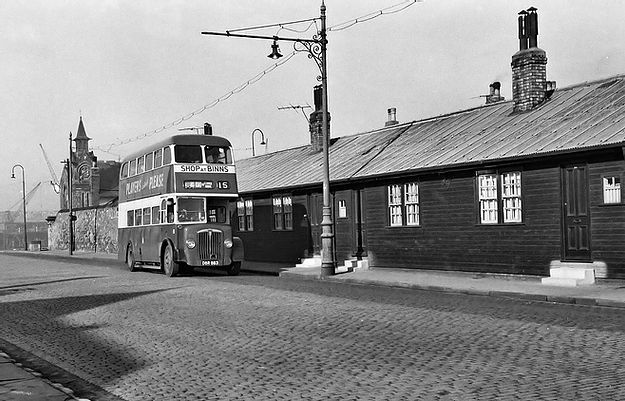



Explore Discover Enjoy
Location 9: Barrack Street
We now turn to walk down Barrack Street. On 16th May 1943, two 500kg high explosive bombs hit Barrack Street. Four people were killed and ten seriously injured in this World War II air raid.
The Barracks were opened in 1795 to house 1,600 troops. At the end of Barrack Street stands the Welcome Tavern. The original building was demolished and rebuilt in 1915. At the East side of the Welcome Tavern is an old entrance to the Docks. Looking North on the right hand side is the site of the old railway engine sheds. Turning right around and looking along Prospect Row, in the wall on the left can still be seen the window sills of what were the Railway houses.
Military defences were installed in the 1740’s during a conflict between Britain and Spain, known as the War of Jenkins’ Ear but it was not until the wars against revolutionary France that a barracks was commissioned. Sunderland people, hoping the government would improve on the one company of militia supposed to guard 500 sailing ships, offered land on the town moor.
The batteries were primarily erected to defend against the French. The 1st Regiment of the West Riding Militia, around 120 soldiers, were posted to Sunderland for six months in 1793, and was one of the last to be billeted in the town. By 1795 temporary barracks were hired, the largest of them were warehouses holding several hundred men. The Sunderland barracks, including a hospital for 80 patients, was then under construction by an architect, Thomas Neill, with ‘extensive and commodious’ premises designed for 1,528 infantrymen. Commissioned in 1795, it covered a seven-acre site on the northern tip of the Coney Warren, between the Black Cat Battery and the town end. Most of this area was open, large enough to march 200 paces in either direction, with buildings running around the perimeter inside a strong wooden palisade. There was rebuilding in the 1820’s, but for many years the barracks were disused and were finally demolished in the 1930s for Corporation Quay,


